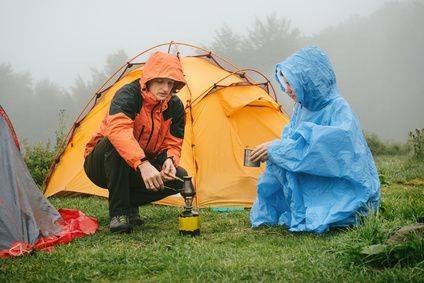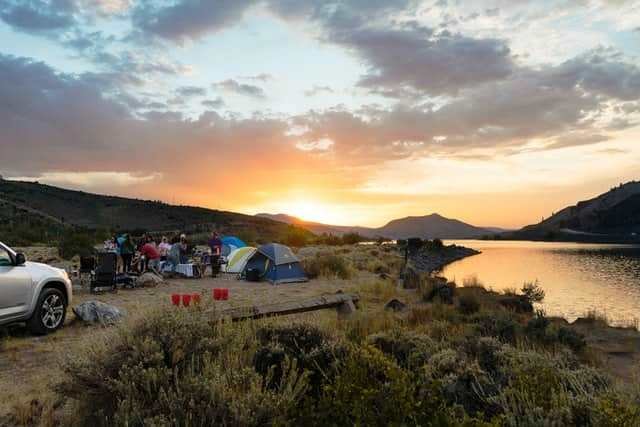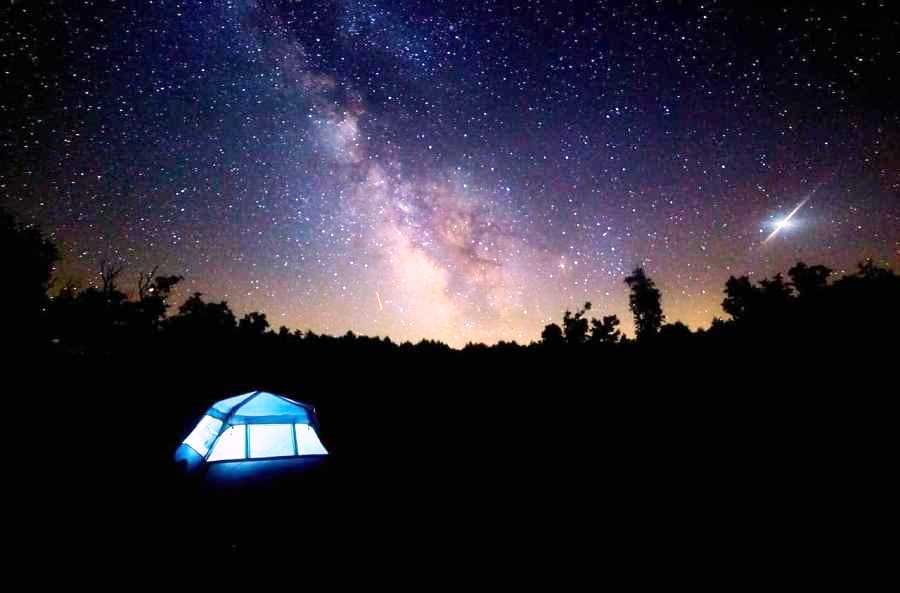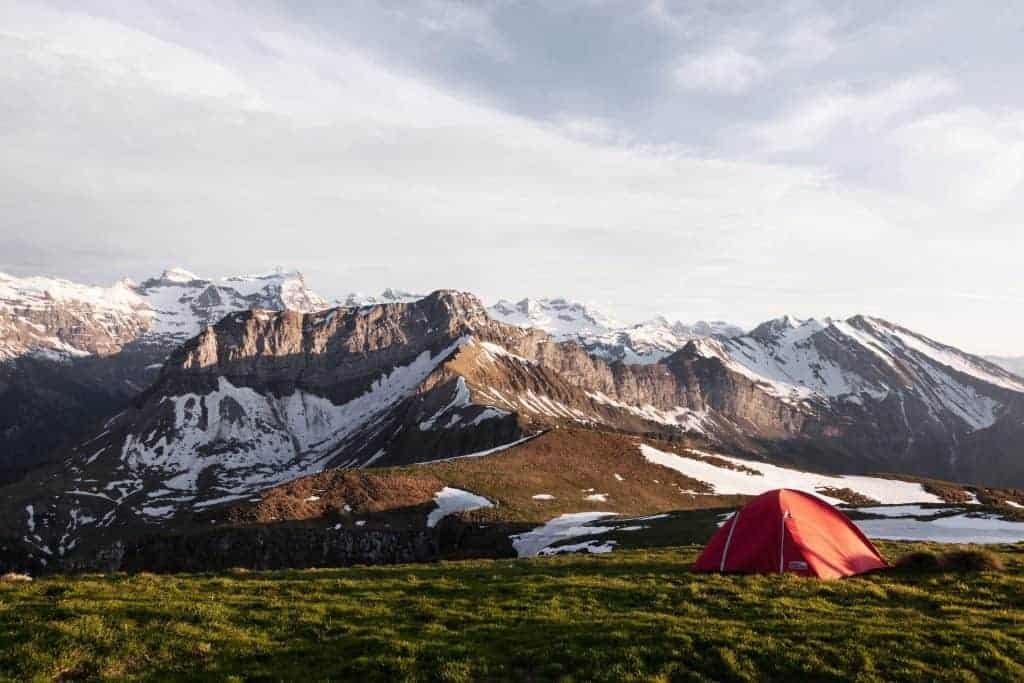The weather is not always predictable. Thus, you always have to be prepared for anything when you hit the trail. Flash flooding and hypothermia are the biggest safety concerns for anyone camping in the rain. Nevertheless, being a little more adventurous in adverse weather can be rewarding. You will never know how magical it is to camp in the rain until you actually experience it.
It is vital to have everything in order before venturing into the wild on a rainy day. Of course, you will need to have a waterproof tent, extra clothing, and much more if you are to make it. For more camping in the rain hacks, check out the exclusive tips below:
What to do if it rains while camping?
Such a scenario is likely to occur at any time. Here is what you should do in the event of a downpour while camping.
1. Hoist a tarp over and under the tent
These two are probably your first line of defense. You should hoist a tarp over your camping tent at an angle that will run the rainwater away from your tent. In addition to that, a ground tarp must be placed on the floor of the tent. While doing that, you should make sure that the ends are not sticking out. This could direct water into the tent.
2. Do not dig ditches around the tent
Digging ditches around your tent will only damage your campsite hence making it less effective against the rain. In the event that you have to do it, make sure that the ditch is shallow and slanted away from the tent.
3. Get on some warm clothes
With rain comes extreme cold. Now, extreme cold is known to cause hypothermia a health hazard. Warm clothing, sleeping bags, or blankets will go a long way in keeping you safe.
4. Move to higher ground
You risk getting flooded if your tent is not set up on the high ground. With that in mind, you might be forced to move to an elevated surface if things get out of hand. This should be done carefully to avoid soaking the inside of the tent.
5. Be keen on wet terrain
There is a greater risk of injury on rocky, muddy, or slippery ground. It worsens even more during a heavy downpour. For this reason, you have to be extremely careful when walking on such surfaces.

Can you put a tent up in the rain?
Yes, it is possible to set up a tent in the rain. However, this is to be done fast and with military precision. First, you will have to raise a tarp over your tent. This will ensure that your camping spot remains dry. Moving on, you will need water-resistant clothing and shoes while get everything in order. Such clothing will prevent you from soaking and keep you warm as well.
On top of the clothing, you ought to have plastic bags to hold your clothing, camping fuel, electronics, and other accessories. Remember plastic bags are water-resistant. Waterproof bags could be used too. Thereafter, you should make sure that the tent is on the high ground since the water runs downhill. A tarp should also be placed on the floor of the tent to seal off groundwater. Single-walled tents are easier and faster to set up as compared to their double-walled counterparts. Furthermore, you will need a sponge if things go south. Finally, you will have to get dry and warm if you get soaked while putting up the tent.
Can you sleep in a tent when it’s raining?
You can comfortably sleep in a tent when it is raining if you take the following safety measures into consideration:
1. Proper ventilation
As much as it may be cold all around, you still need to breathe fresh air. If you plan to sleep in your tent while it rains then proper ventilation is very important.
2. Lots of food
Warmth is essential in this situation and there are numerous ways of generating it. Eating nutritious food is one of them. Food helps to generate heat and maintain body temperature. You will need lots of it. A cup of hot coffee, for instance, will keep the cold at bay.
3. Layer up
A good layering system helps to keep your body temperature in check. Wool or polyester bases have proven to be impeccable at this.
4. Insulation
The ground will be cold and wet due to the rains. A well-insulated surface will guarantee warm and comfy sleeping quarters. Adding a bivy bag to your sleeping compartment will boost the level of insulation. Likewise, you can double sleeping pads to stay warmer. `
How do you keep a tent dry in the rain?
1. Ensure the tent floor is waterproof
Not every tent is waterproof. Therefore, you should buy one that will keep water out of reach in the event of a storm. Moreover, there is a significant difference between waterproof and water-resistant tents. Waterproof ones are ideal for a heavy downpour. Besides that, you should consider the seams. They ought to be taped or sealed completely to curb leaking. Most importantly, ensure that your tent has a rain shield.
2. Clothing
The moisture content on your clothes has a remarkable impact on the dryness of your tent when it rains. By ensuring that your clothes are dry at all times, you will be going a long way in keeping the tent moisture-free. This is where waterproof gear comes in.
3. Elevate your sleeping area
Whenever it rains, the ground is bound to retain moisture. The dampness on the ground will effortlessly sip through any synthetic material, particularly your sleeping bags. Thus, in order to remain dry, you need something to keep you off the wet ground. Camping cots or airbeds can come in handy.
4. Set it up on the high, dry, and level ground
It is crucial to set up your tent in a proper spot if you are serious about keeping it dry. The ground has to be on a high, dry, and leveled surface. A depression will definitely get your tent flooded. The same goes for low ground and a dump surface. Nonetheless, trees will naturally shield you from extreme weather. Areas around rivers, oceans, or lakes are completely unsafe.
Conclusion
There you have it for camping in the rain hacks. Always buy quality waterproofing tents and other materials. They hardly disappoint when it really matters. To top it off, you should remember to air and dry your tent, clothing as well as other gear in preparation for the next hiking trip.





